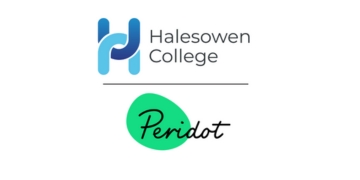Grammar schools are back dominating the top of GCSE league tables after the progress 8 performance measure was put on pause for two years.
Progress 8 cannot be calculated this year and next because SATs were cancelled for two years during the pandemic. It measures the progress between the end of primary school up to GCSEs.
Instead, the government’s performance website now defaults to ranking schools by attainment 8 – which scores pupils across eight “slots” including English and maths.
Last year, 15 of the top 50 highest P8 scores were grammar schools. But this year, all but one of them are schools with selective intakes, whose pupils were already high performers on entry.
Michaela Community School, in west London, is the only non-selective state school in the top 50 this year coming 47th. It usually tops the progress 8 league tables.
Experts said this has reconfirmed that, “despite its flaws”, progress data is a fairer way of comparing schools than just using raw attainment measures alone as it adjusts for differences in attainment on intake.
FFT Datalab found a group of schools which had above average progress scores last year but below average attainment scores in 2025. Schools in more disadvantaged areas will tend to have lower A8 scores, it said.
‘Parents have a sense of a good school’
The Steiner Academy Hereford was ranked sixth in the country for progress 8 last year, but it now shows as 838th in the attainment 8 league table.
Eden Boys’ School, Birmingham, had the fourth-highest progress 8 score in 2024. It is 225th for attainment 8.
Bedford Free School, part of Advantage Schools, was 42nd for P8 last year, compared to 1,542 in A8 this year.

Stuart Lock, Advantage Schools chief executive, said he was “very proud” of the school and “not worried” about where it is in the league tables.
“I don’t think parents look at progress 8 or attainment 8 very much. The detail beyond a general impression has never really been that powerful for parents. They have a sense of a good school in an area.
“And now attainment 8 is all we’ve got, not that that it is anyone’s fault. I’m in favour of data, transparency and league tables – but you can tell a very small amount from the data.”
He added that “we should credit the grammar schools at the top as they are very likely to be doing a good job of it”.
‘Always challenges’
Frank Young, chief policy officer at Parentkind, said that school performance measures can be “very challenging” for parents, who take a “rounded view of schools”.
“Data is good, but there are always challenges related to communication to help parents understand how their school compares to other nearby or similar schools, but it certainly isn’t the only measure for parents.”
When looking at individual schools on the Department for Education’s (DFE’s) school performance website, it does also state that “attainment measures show how pupils have performed in tests and assessments but do not take pupils’ starting points into account”.
In 2016, progress 8 replaced 5 A*-C including English and maths as the main measure for secondary schools.
But whether progress 8 returns, and in what shape, is bound up with the government’s curriculum review, Pepe Di’Iasio, general secretary of ASCL said.
“We would like to see a system where the information provided to parents better reflects the breadth of what schools do – and we can see that the government is trying to move in that direction – but the measures which underpin any system have to be right.”
Datalab said the fairest comparison of performance of any school now is with other schools with similar intakes.
The DfE was approached for comment.












What a surprise…you cream off the best kids at 11, bin underachieving ones (it happens, I see it)…and lo and behold, top the tables.
Whilst schools in rough, deprived areas in a grammar system county, with a lack of specialist teachers, high rates of functional literacy, and parents from the more drug taking, scraping knuckles part of society…tend to do less well.
This article should win a prize for journalism…nobody could have predicted that.
Well… I went to a state grammar school. As in… all sorts of pupils from all sorts of backgrounds went. I think it is very good idea. I think nearly all schoold have different sets anyway depending on performance.
Using football as an analogy, it doesn’t make sense for the more able and/or harder working kids to stay and play for a lower division team when they can play in the top tier.
Where I think there’s disparity is the high earners (6-figure upwards!) who get their kids into grammar schools, which were set out to enable social mobility, when they could afford a private school.
As ever, where there’s a system, people will play it!